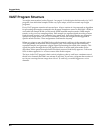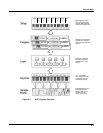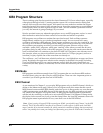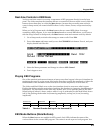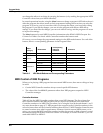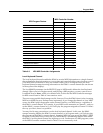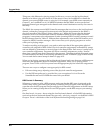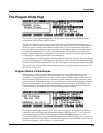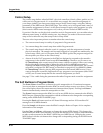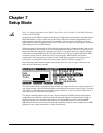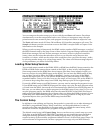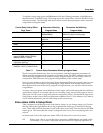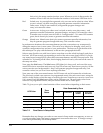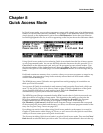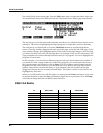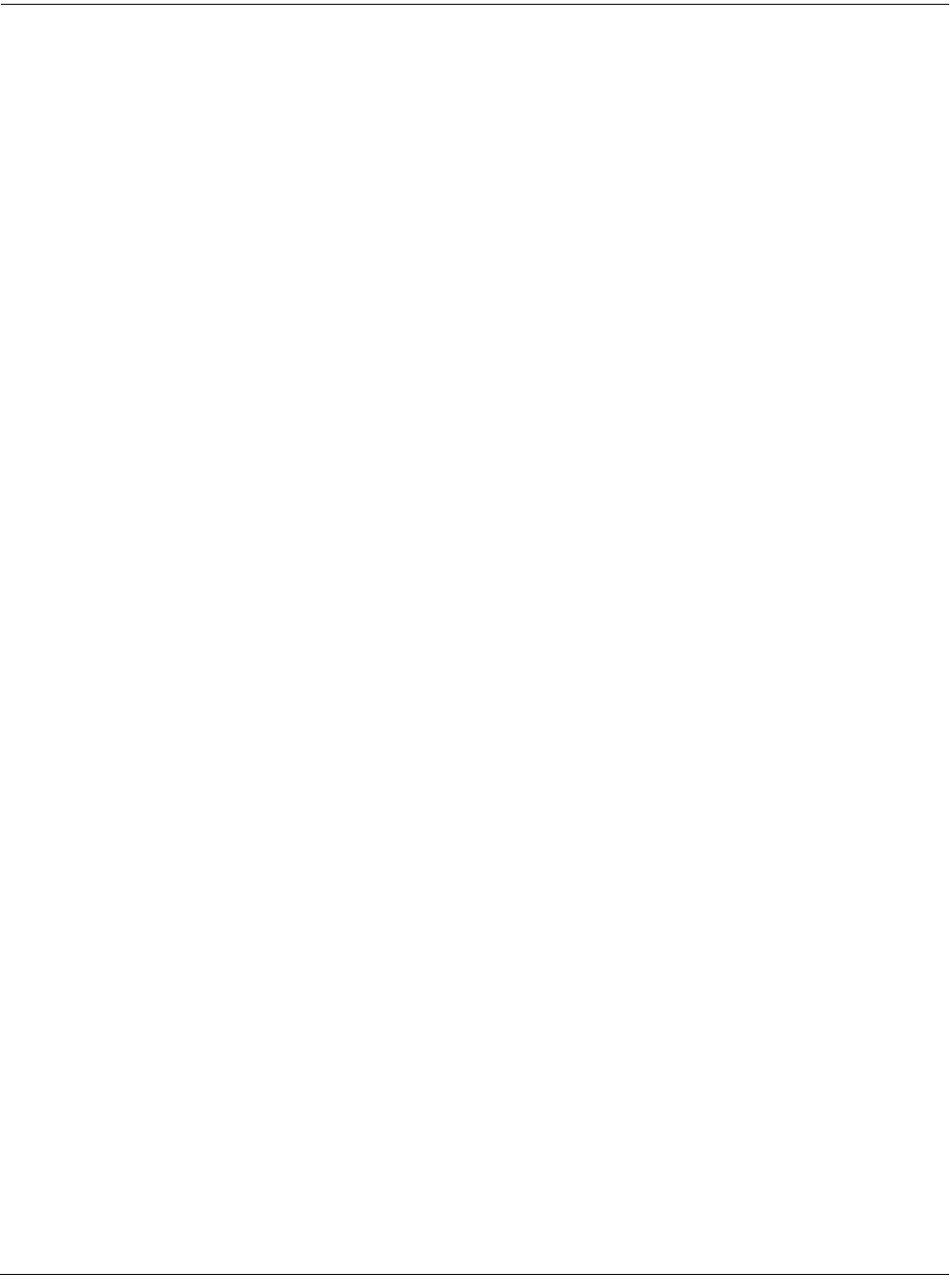
Program Mode
The Program Mode Page
6-9
The Program Mode Page
ProgramMode||||Xpose:0ST|||<>Channel:1||
!!!!!!!!!!!!!!!!!!@|199|Default|||||||||
KeyMap|Info|||||||#|209*Dig|it|al|||||||
|Grand|Piano||||||#|||1|Righteous|Piano|
||||||||||||||||||#|||2|Mondo|Bass||||||
||||||||||||||||||#|||3|Killer|Drums||||
%%%%%%^%%%%%%^%%%%$|||4|Weeping|Guitar||
Octav-|Octav+|Panic||Sample|Chan-||Chan+
The top line of the Program-mode entry-level page shows your location, the present MIDI
transposition, and the current MIDI channel.
The info box at the left of the Program-mode page gives you information about the current
program. For VAST programs of up to three layers, the info box shows the keymap assigned to
each layer (Layer 1 on top, with additional layers below). The line beneath the name of the
keymap indicates the keyboard range of that layer. In the diagram above, for example, there’s
one layer that extends from C 0 to C 8—the default range. The representation of these layer
ranges is approximate; they’re intended to let you know if you have a layered keyboard (lines
overlapping) or a split keyboard (lines not overlapping).
For drum programs (VAST programs of more than three layers), the info box shows the number
of layers in the program. For KB3 programs, the info box shows the keymap used for the upper
tone wheels (or the lower tone wheels, if you have the Upper/LowerSwap parameter set to On).
The info box also tells you if the current program makes use of Triple Mode (see Chapter 12 of
the Musician’s Reference.)
Program Names in Parentheses
While you are scrolling through different programs on various MIDI channels, you may
occasionally encounter a program that doesn’t make any sound, and whose name is in
parentheses. The parentheses tell you that you have selected a KB3 program without being on
the KB3 channel. KB3 programs use a different program architecture, and require many more
voices to operate. Consequently, they use a special channel with enough throughput to handle
those voice requirements. If you select a KB3 program without being on a KB3 channel, the
K2661 cannot play the program. As shown in the following illustration, the KB3 channel is 1,
while the K2661’s current channel is 2. The selected program is disabled.
ProgramMode||||Xpose:0ST|||<>Channel:2||
!!!!!!!!!!!!!!!!!!@|112|(Hammin|Jammin)|
KB3|Program|||||||#|113|(Funkie|Munkie)|
|Mellow|Vox|||||||#|114|(Le's|Rock)|||||
||||||||||||||||||#|115|(Jimmy,|Jimmy,|)
KB3Chan|is|Ch|1|||#|116|(Inagadadavida)|
%%%%%%^%%%%%%^%%%%$|117|(Grind|it,|Gran)
Octav-|Octav+|Panic||Sample|Chan-||Chan+
The Program-mode page illustrates this in two ways: the program names are in parentheses,
and the box at the left of the page includes the message “KB3 Chan is Ch 1.” To fix this, you
could either change the K2661’s MIDI channel (with the Chan/Bank buttons), or make
Channel 2 the KB3 channel (using the KB3Chan parameter in Master mode). You can play any
program on the KB3 channel, but you can play KB3 programs only on the KB3 channel. You can
play drum programs—up to 32 layers—on any channel.




